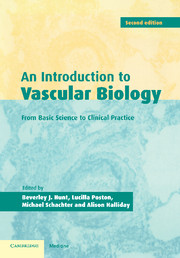8 - Genes for hypertension
Published online by Cambridge University Press: 07 September 2009
Summary
Earlier this century researchers became intrigued by the frequent presence of a positive family history for hypertension in patients and this generated an intense debate between Pickering and Platt regarding genetic influences upon blood pressure. The former pointed to the observation of a normal distribution of blood pressure in the population as argument for a multigenic influence upon blood pressure variation and thus hypertension (Pickering, 1965). The latter suggested that hypertension was under the influence of a single gene which, through an autosomal dominant mode of Mendelian inheritance, led to the hypertensive phenotype (Platt, 1963). Nowadays, many accept the view that several genes are probably involved in elevating blood pressure. However, some of the greatest advances in understanding genetic influences upon blood pressure have been made in a series of rare hypertensive traits where anomalies within single genes have a profound effect upon blood pressure.
Patterns of inheritance in essential hypertension
In single-gene disorders such as cystic fibrosis it is possible to demonstrate Mendelian patterns of inheritance and it becomes easier to categorize a family member as affected or unaffected (Lander and Schork, 1994). Although there are rare hypertensive traits which exhibit Mendelian patterns of inheritance, this is frequently not so easy to define amongst patients with essential hypertension (White, 1996).
- Type
- Chapter
- Information
- An Introduction to Vascular BiologyFrom Basic Science to Clinical Practice, pp. 169 - 185Publisher: Cambridge University PressPrint publication year: 2002



